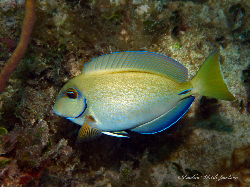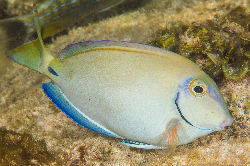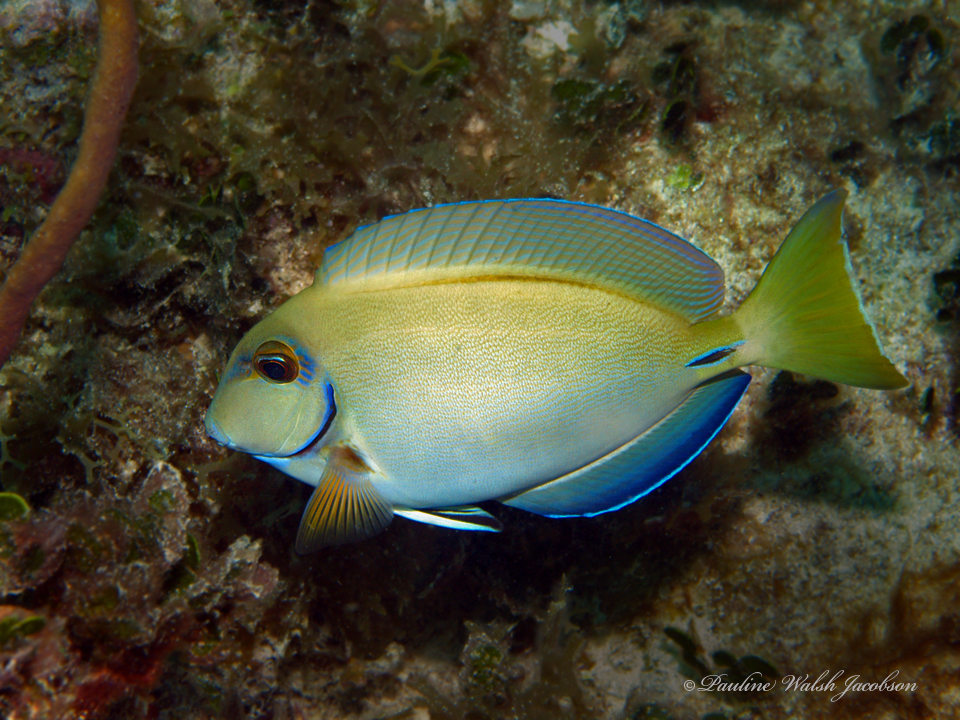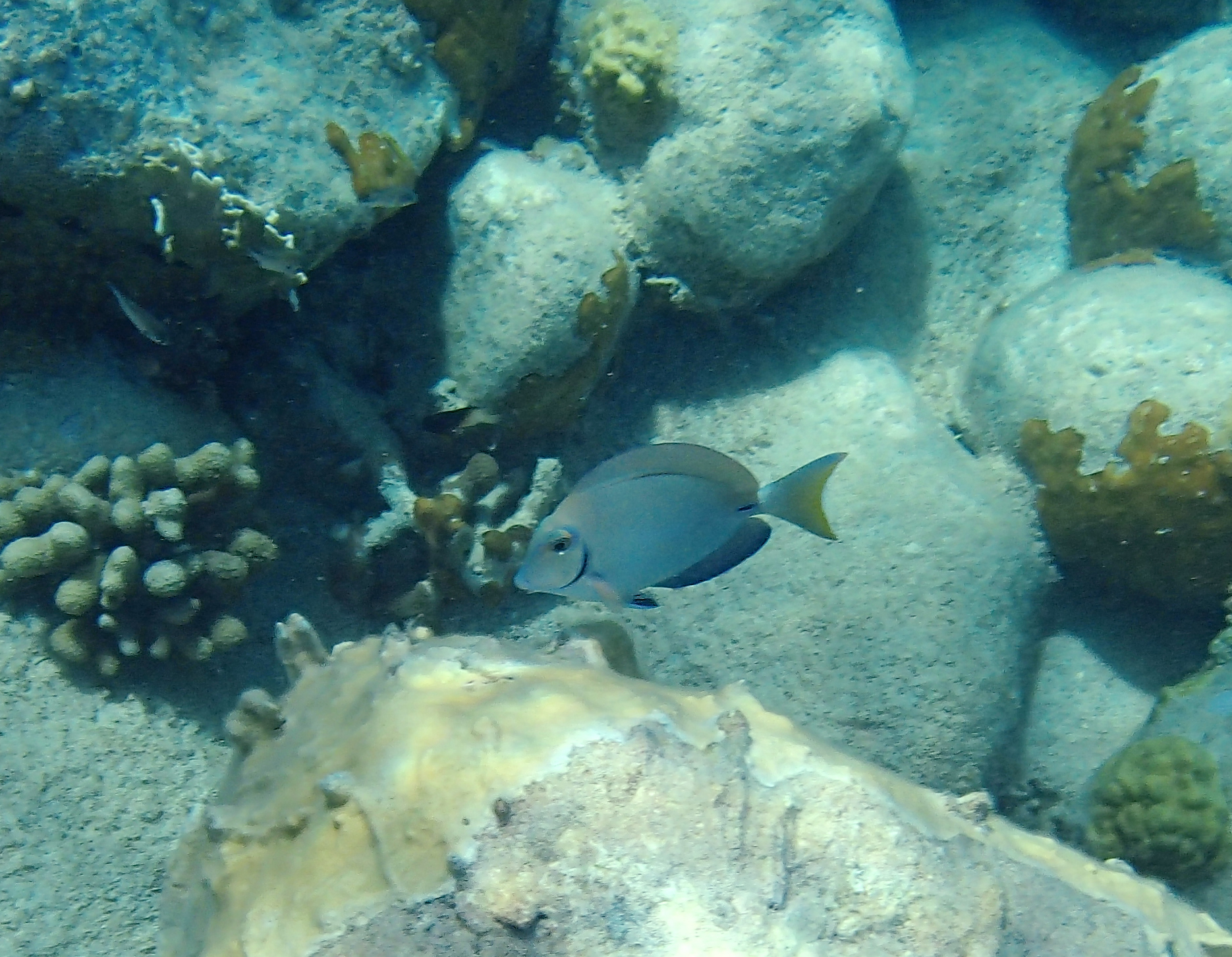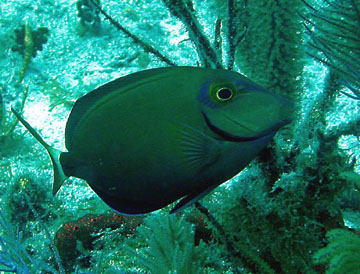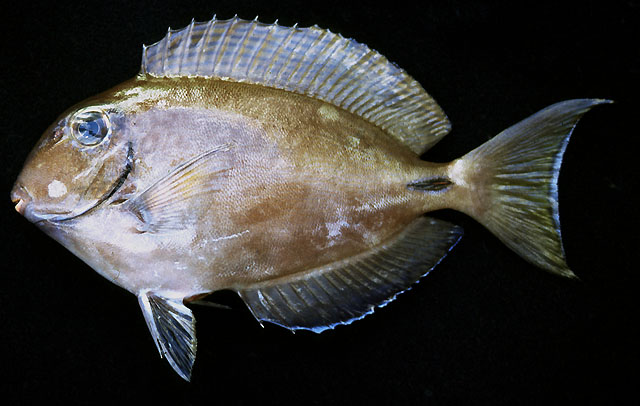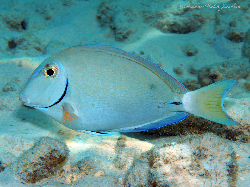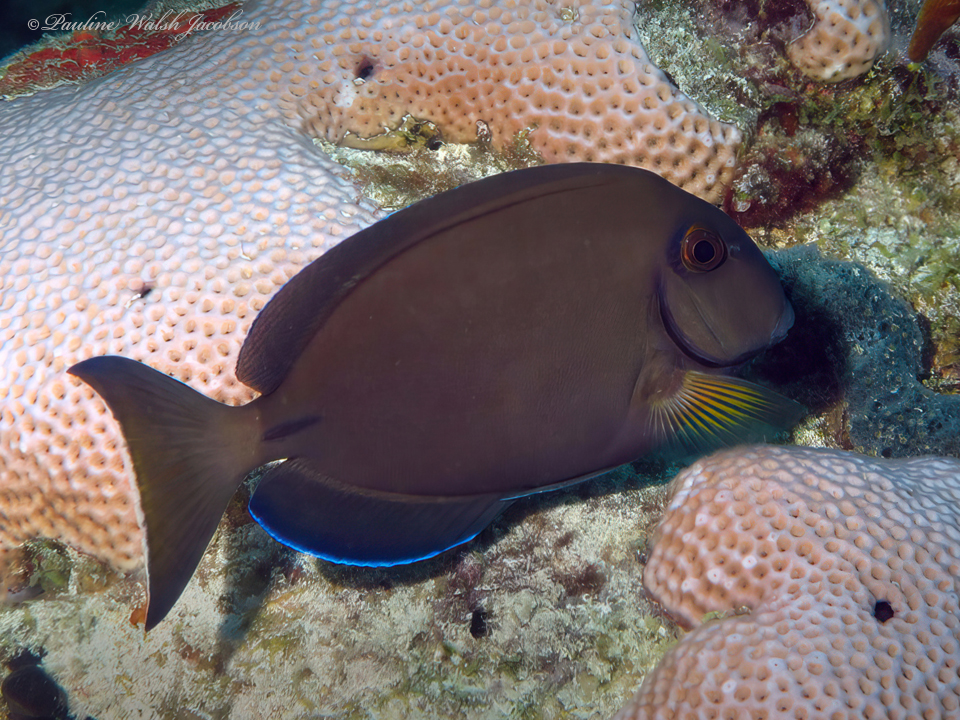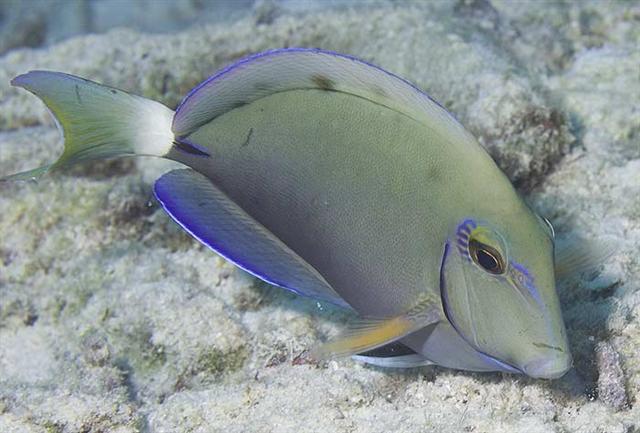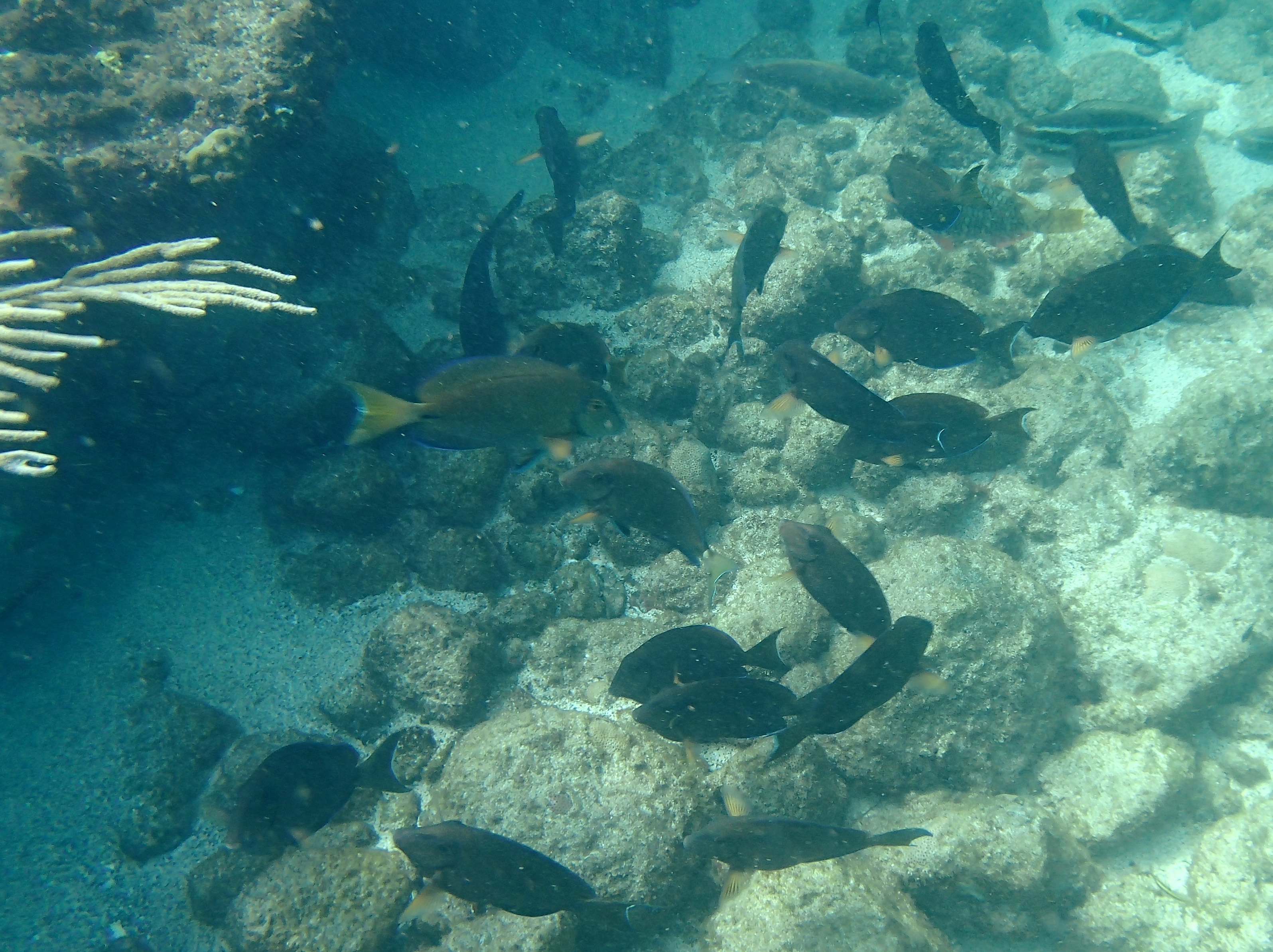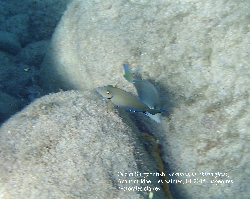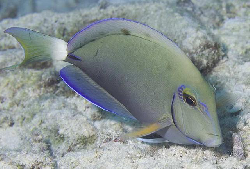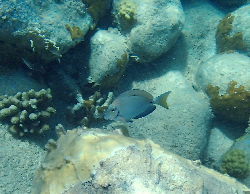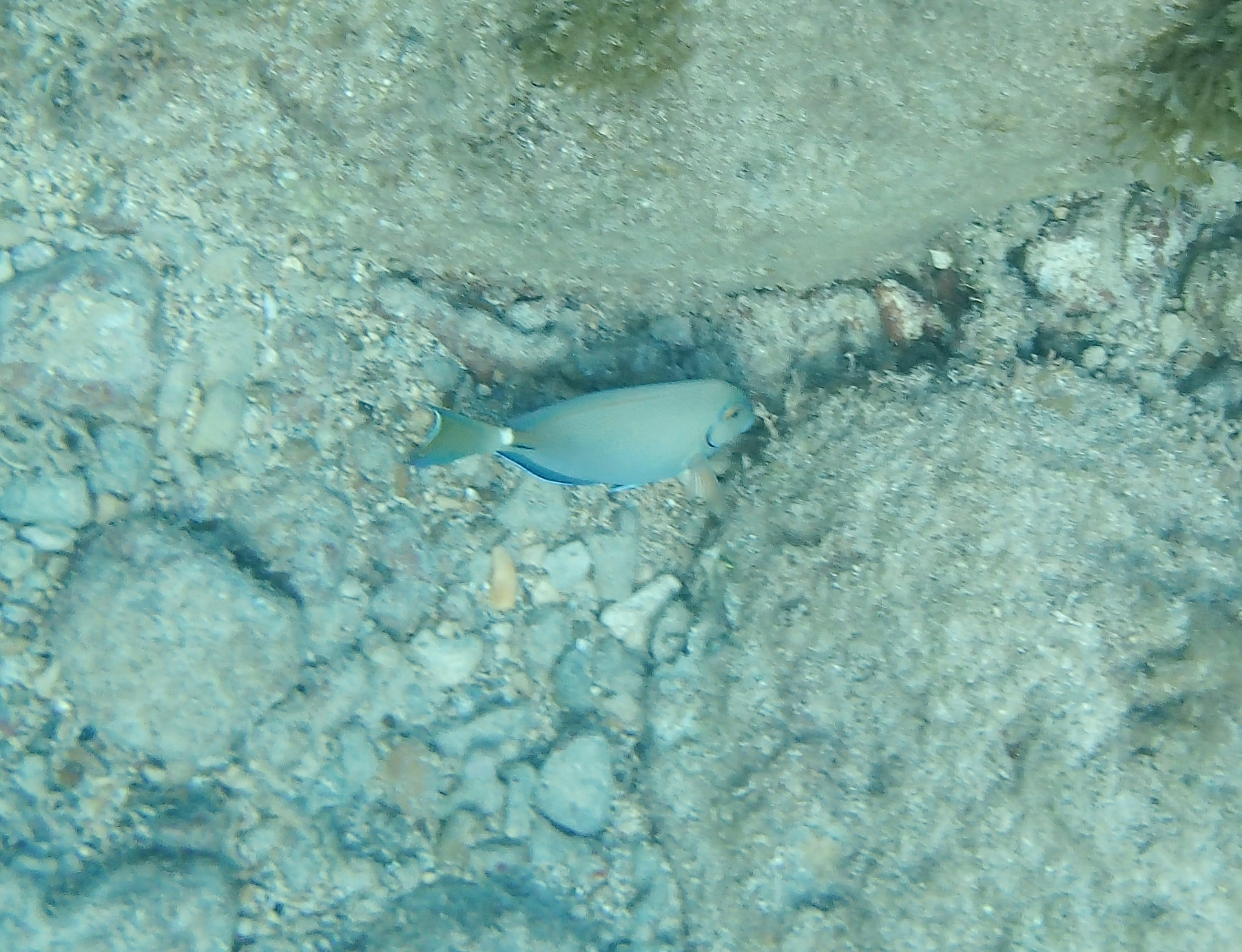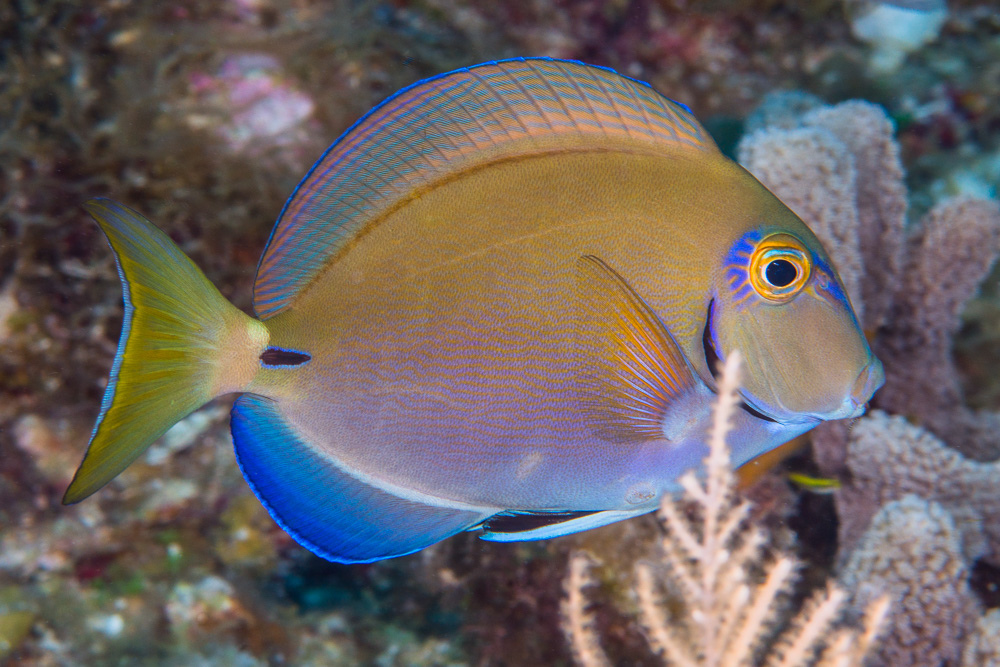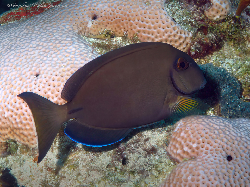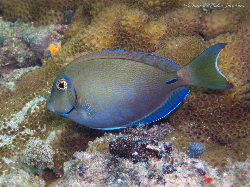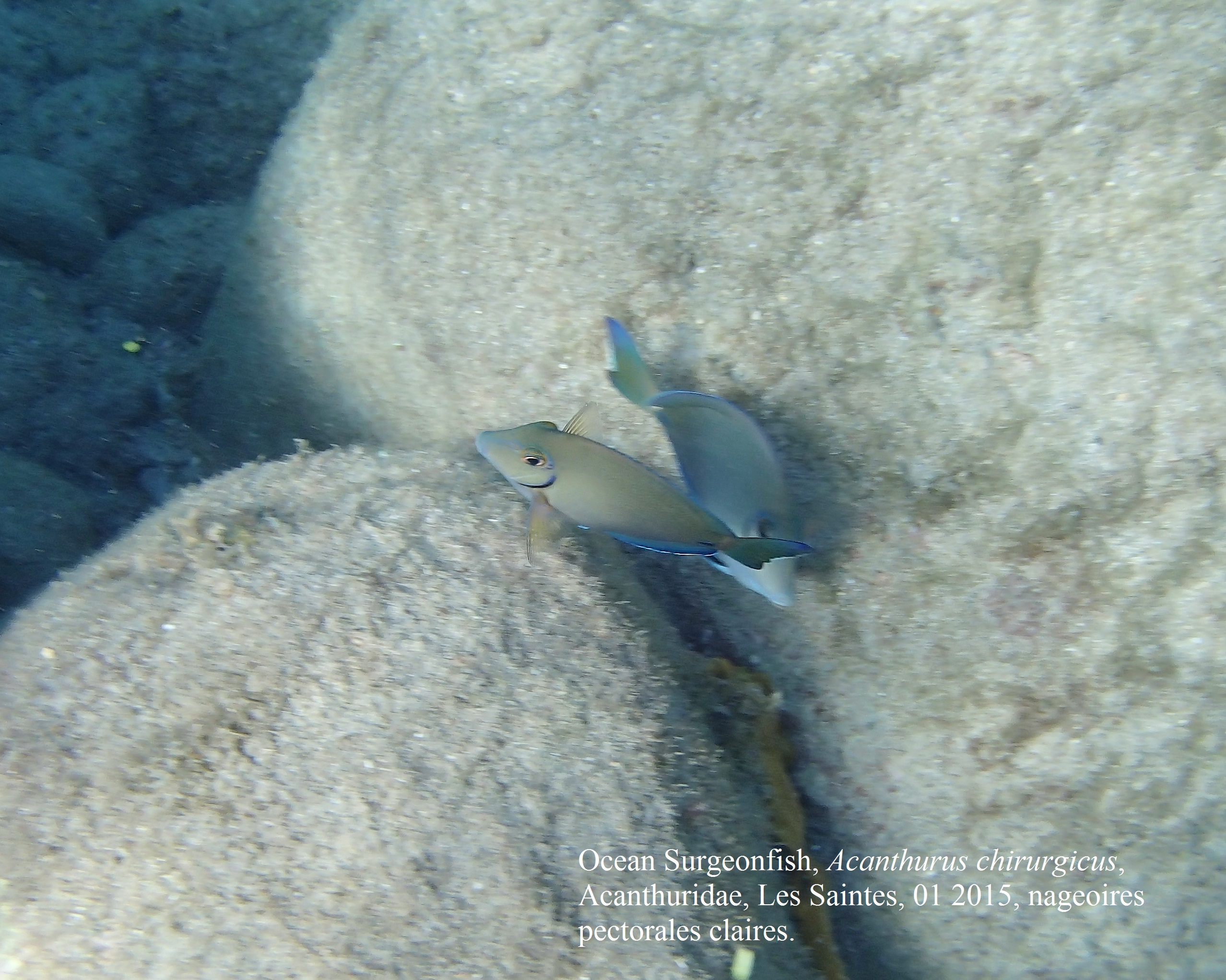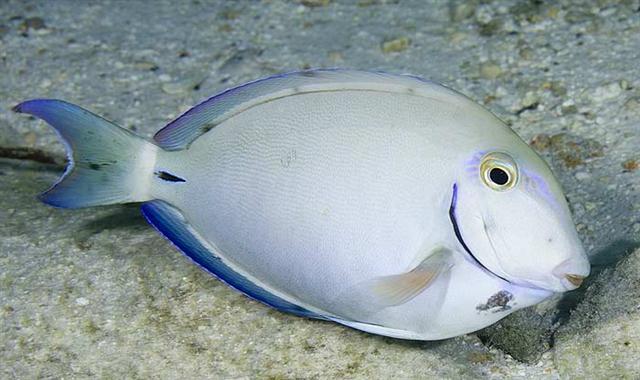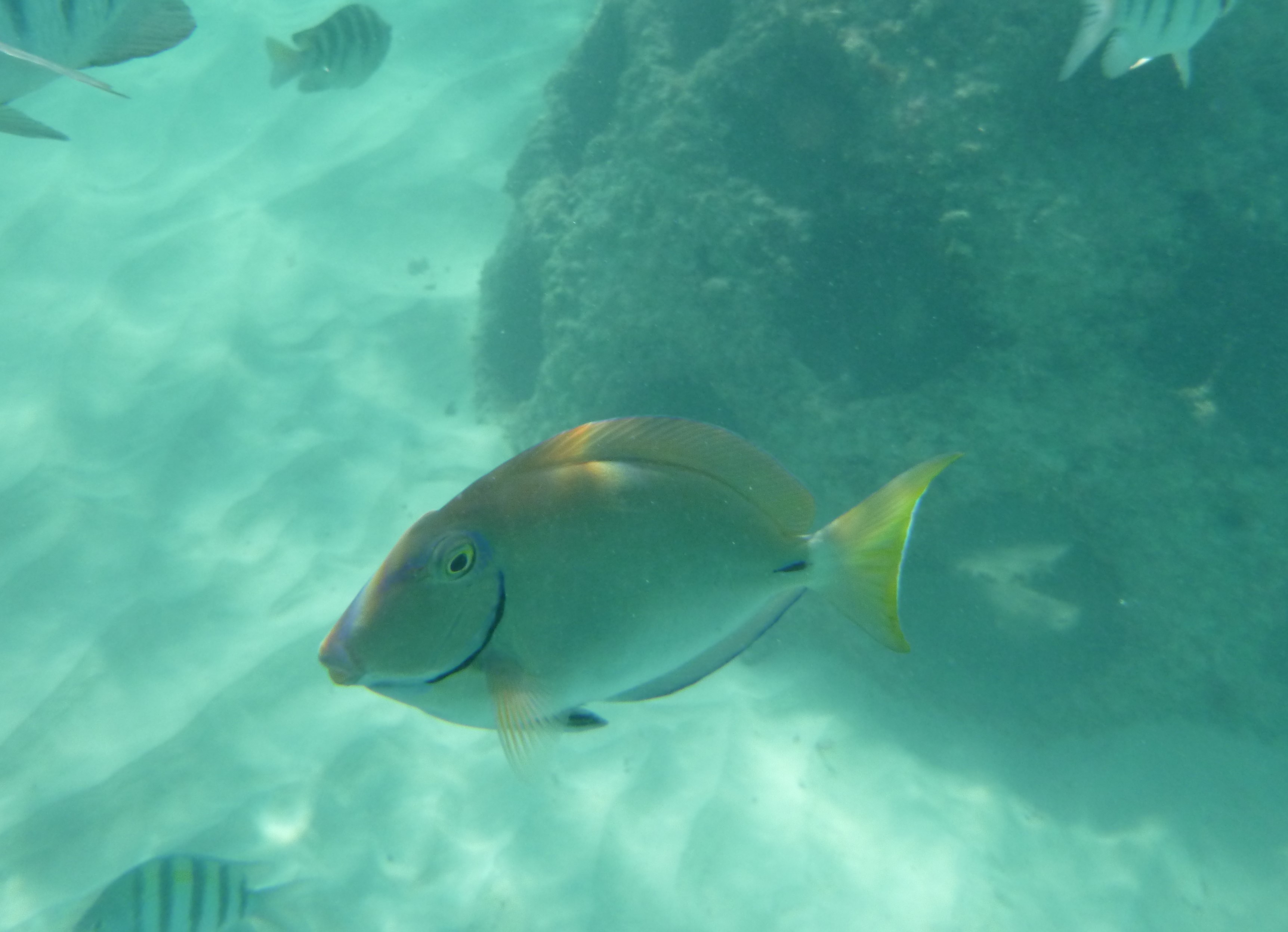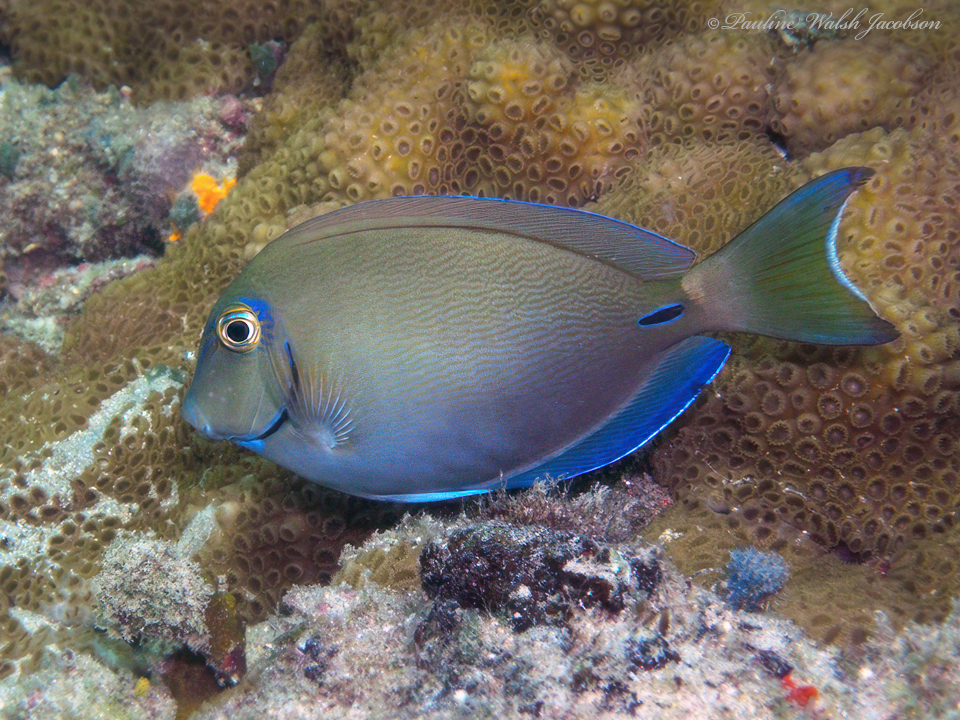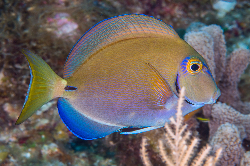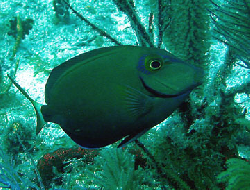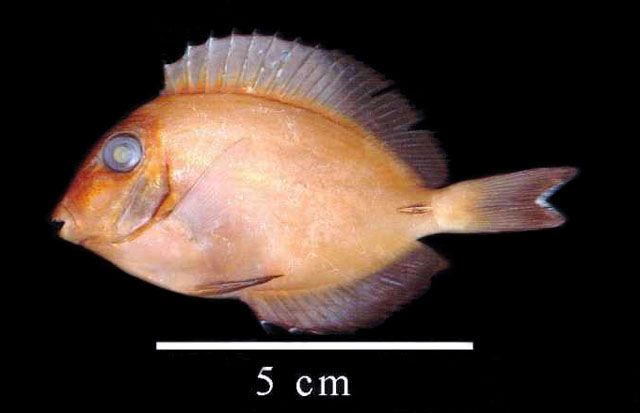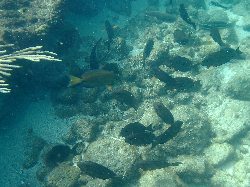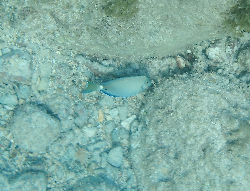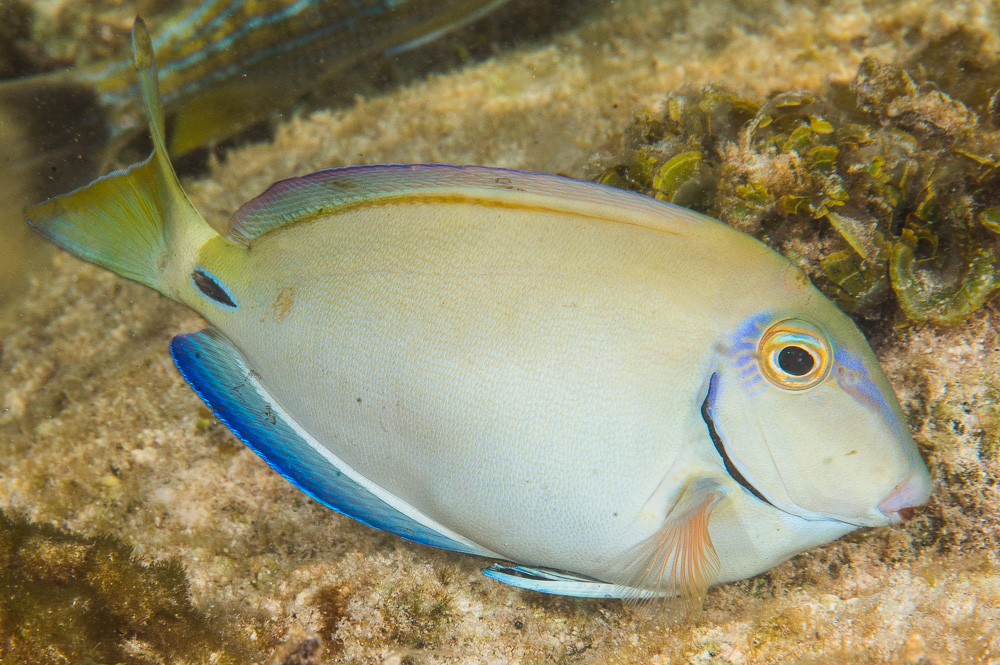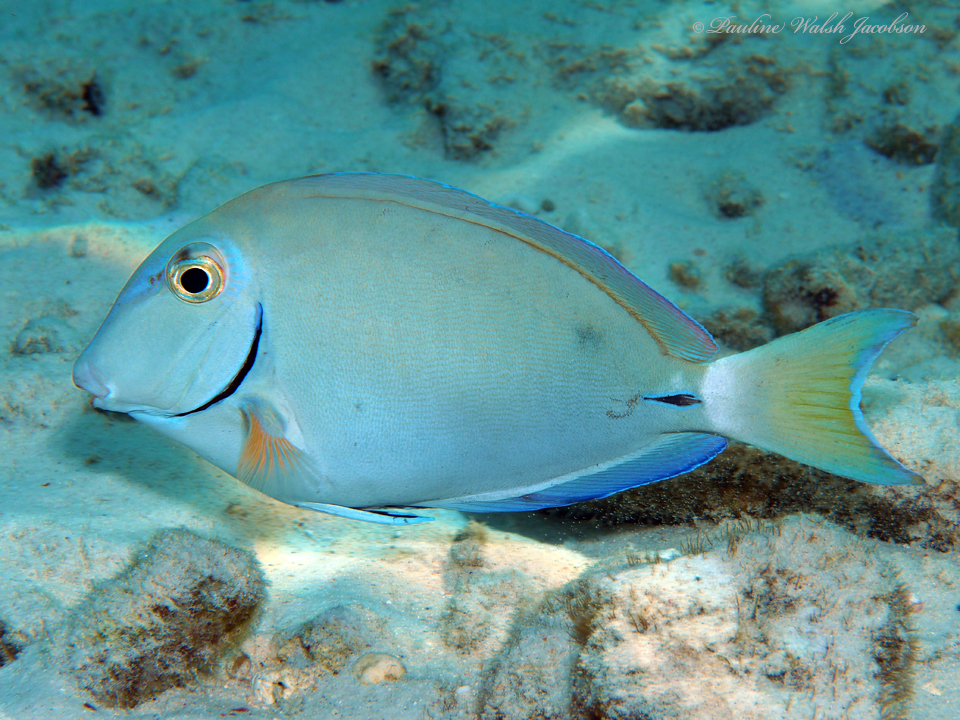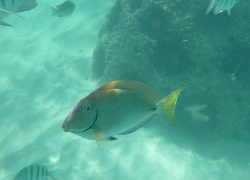Acanthurus tractus Poey, 1860
Description
Dorsal spines (total): 9; Dorsal soft rays (total): 23 - 26; Anal spines: 3; Anal soft rays: 21 - 23. This species is distinguished by the following set of characters: D IX, 23-26; A III, 21-23; pectoral rays 15-17; gill rakers 18-24; covered with very small ctenoid scales; spatulate teeth have denticulate edges, upper jaw with 14, lower jaw 16; body depth about 2.0 in standard length; caudal fin lunate, concavity of caudal fin 5.0-12.0 in SL, more concave in adults; length of caudal spine 3.0-3.5 in SL; eye diameter 3.0-3.5 in head length; colour of body yellowish to grayish brown, without dark vertical bars; yellow lines radiating from the posterior margin of eye; translucent pectoral fin with yellow tints; white or pale spot at the base of caudal fin; posterior margin of caudal, anal and dorsal fins have light blue or white margin (Ref. 87362)..
Common Names
Taxonomic Hierarchy
Kingdom: Animalia
Phylum: Chordata
Class: Teleostei
Order: Acanthuriformes
Family: Acanthuridae
Genus: Acanthurus
Species: Acanthurus tractus Poey, 1860
Climate Zone
Location
Biology
Inhabits shallow bottoms with coral or rocky formations (Ref. 13628); also found around inshore rocky areas with patches of sand, feeding primarily on benthic algae and occasionally grazing on seagrass beds (Ref. 87362). Usually occurs in groups of five or more individuals. Mainly diurnal species. The spine on both sides of the caudal peduncle may inflict painful wounds (Ref. 5217). Marketed fresh. Minimum depth reported from Ref. 27115. Previously reported longevity of 31 years from Ref. 52229 refers to Acanthurus bahianus, a case of misidentification.
Habitat
associated
Conservation Status
Least Concern
Threat to Humans
Traumatogenic
